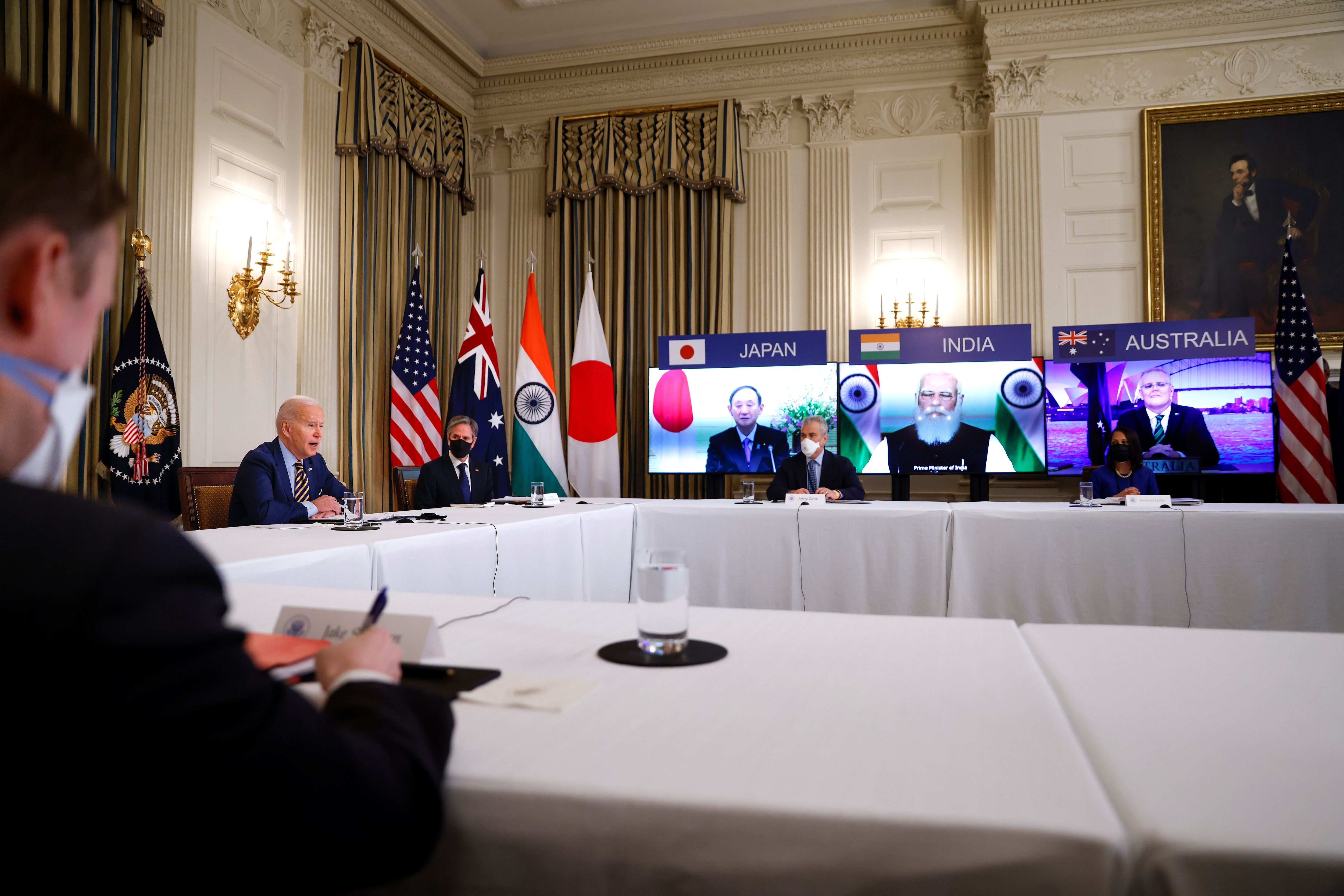Quad Summit—Reaffirming the Pivotal Role of the Format in the Indo-Pacific

What is the Quad?
The Quad, or the Quadrilateral Security Dialogue, is a forum for consultations between the Indo-Pacific democratic powers. Although the Quad’s first informal meeting was held in May 2007, it was revived during the presidency of Donald Trump, who considered it a tool in competition with China. In September 2019, the dialogue was raised to the foreign ministers level. A second meeting was held in Japan in September last year, and in November the Quad countries conducted their first joint naval exercise. The tightening of contacts was triggered by the deterioration of Australia’s and India's relations with China in 2020. A third meeting of chief diplomats in February this year confirmed that the new U.S. administration will continue to engage in this format.
What was agreed at the summit?
The main topics of the talks were the fight against the pandemic, climate change, terrorism, and economic cooperation. For the first time, a Quad meeting ended with a joint statement in which members set out a vision of the Indo-Pacific as a region “open, free, inclusive and rule-based”. A tangible result of the summit is the pledge to expand production capacity in India of U.S. vaccines against COVID-19 by 1 billion doses and their distribution in the Indo-Pacific. Three working groups were established: one on vaccines, another on critical and emerging technologies, and a third on climate. Meetings of foreign ministers are to be held at least once a year and the leaders plan to meet in person again by the year’s end. China is not mentioned in the statement, as the leaders wanted to portray the Quad not as a club directed against anything but as a force for the common good in the region.
What is the international significance of the meeting?
The summit strengthened the Quad as a key forum for cooperation in the Indo-Pacific and introduced significant changes to the way the format works. First, it moved from consultation to implementation and joint action. Second, it extends the field of cooperation beyond security to cover most of the key challenges in the region. Third, the strategy of rivalry with China is changing from confrontation to competition. The Quad wants to offer a more attractive economic, health, and political offer than the Chinese. Such an approach will be positively received by most countries in the region who negatively assessed the confrontational approach of the Trump administration. The strengthening of the Quad will nevertheless be perceived as a serious threat by China, which describes the forum as an “anti-Chinese alliance” or “Asian NATO”.
What are the development prospects for Quad?
Commitments at the highest level give a new dynamic to the cooperation within the Quad. In the coming months, a deepening of security cooperation is expected, including intensification of military exercises. The Quad will also become an important forum for coordinating activities in other areas, including the post-pandemic economic recovery and diversification of global supply chains to increase the resilience of the countries in the region to Chinese influence. One can also expect joint diplomatic initiatives on regional issues, including the Korean Peninsula, the coup in Myanmar, or maritime security. The group will be open to cooperation with new partners within the Quad-Plus formula. However, it will not transform into a formal military alliance, mainly due to the reluctance of India, which is the only country not tied to the U.S. with a defence pact. The intensity of cooperation will largely depend on actions by China.
What does this mean for the EU and NATO?
The summit confirms that the centre of global politics and economy has already shifted from the transatlantic area to the Indo-Pacific, which has become the most important strategic region for the U.S. This requires updating the approach to the region by the EU and NATO. It is no coincidence that on the day of the summit, EU High Representative for Foreign and Security Policy Josep Borrell published a text in which he emphasised the importance of the Indo-Pacific for the Union and announced the creation of a common vision of EU engagement in the region. The final version of the document is to be prepared by the end of this year, and the guidelines for its preparation will most likely be adopted at next European Council. Changing U.S. priorities may lead to a decline in American involvement in Europe and will require the inclusion of the Indo-Pacific in NATO’s strategy.


